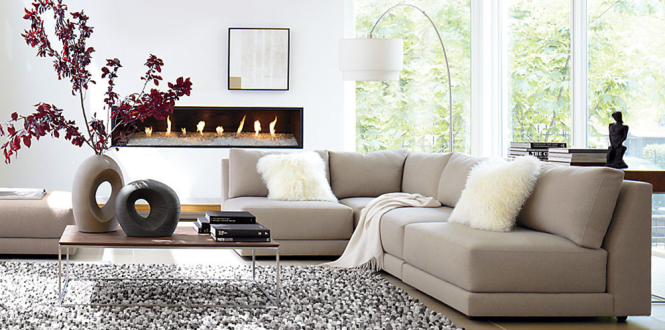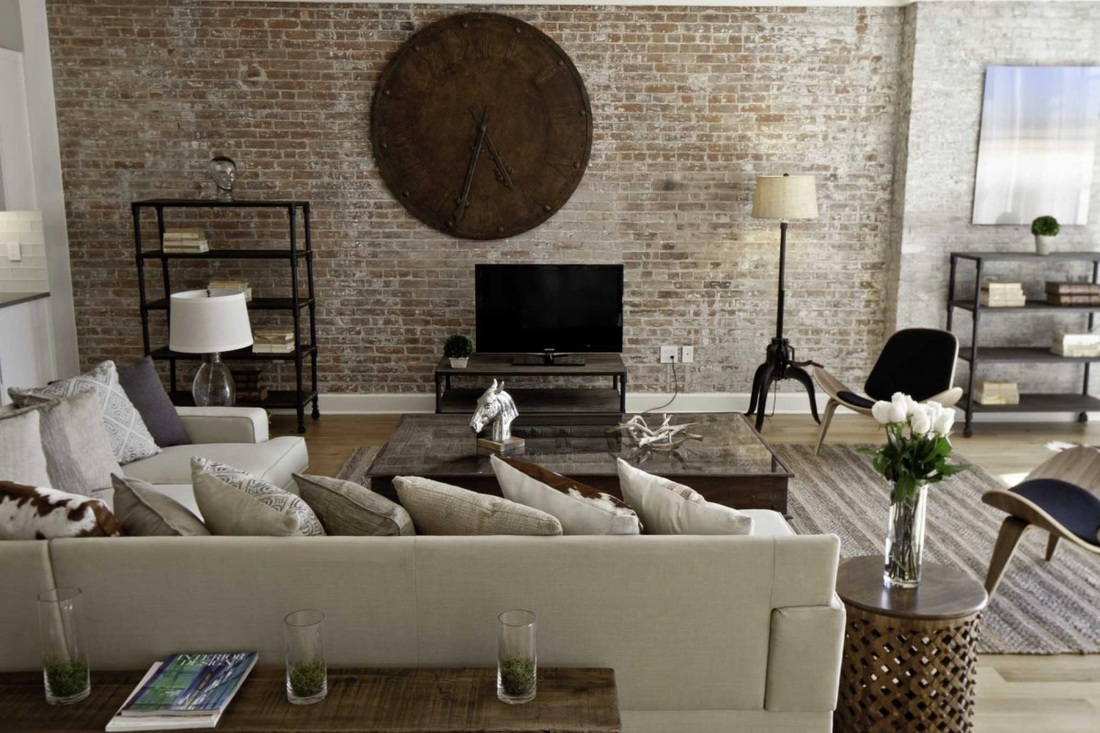

Interior texture plays a pivotal function in shaping the overall feel and aesthetic of any interior space. Walking into a room, we’re not just visually processing the colors and shapes; we’re also engaging with the textures—the smoothness of a marble countertop, the roughness of a woven rug, the softness of a velvet cushion. These tactile experiences significantly impact our perception and emotional response to a room. Many homeowners, however, overlook the potential of texture, settling for visually appealing spaces that lack the depth and richness a carefully considered textural palette can offer. This article will explore the multifaceted importance of texture in enhancing interior spaces, offering practical strategies and inspiring examples to help you transform your home into a truly engaging environment. We’ll delve into varied types of textures, their impact on various design styles, and how to effectively combine them to achieve harmonious and visually stunning outcomes. Get ready to discover the transformative power of texture!
The Power of Tactile Experiences in Interior Design
Understanding the Sensory Impact of Texture
The human experience is deeply multi-sensory. While sight is often prioritized in design, the sense of touch plays a vital, often overlooked, function in shaping our perception of space. Texture isn’t just about visual appeal; it adds a layer of tactile engagement, influencing our emotional response and overall comfort within an environment. A smooth, cool marble surface feels distinctly varied from the warm, rough texture of a hand-woven rug, triggering varied emotional and physical responses. Consider a minimalist bedroom: the cold, smooth surfaces of glass and steel might feel stark and impersonal. Introducing warm, textured elements like a linen bedspread or a chunky knit throw instantly transforms the space, making it feel cozy and inviting. This is the power of tactile experience in interior design. It’s about understanding how varied textures interact with our senses to create a holistic experience. Think about the feeling of walking barefoot on a plush carpet versus a cold tile floor. The subtle shifts in texture instantly change the sensory experience and overall comfort.
Incorporating Texture to Enhance Mood and Ambiance
Textures are potent tools for mood manipulation. Rough, natural textures like exposed brick or wood can create a rustic and grounding atmosphere, fostering feelings of warmth and stability. In contrast, smooth, sleek surfaces such as polished concrete or glass contribute to a modern, clean aesthetic, projecting a sense of sophistication and minimalism. Consider the use of various textures in varied rooms of a house: a plush carpet in the bedroom for a sense of comfort and relaxation; a smooth, easy-to-clean tile in the bathroom for hygiene and a sense of order; rough-hewn wood in the living room for warmth and a feeling of nature.
Choosing the Right Texture for varied Design Styles
The selection of textures should align with the overall design style. A contemporary space might benefit from the clean lines and smooth surfaces of glass, metal, and polished stone. A traditional space might incorporate rich textures like velvet, brocade, and carved wood. Incorporating contrasting textures within a style can add visual interest. For example, a sleek, modern kitchen might benefit from a textured backsplash to complement the smooth cabinetry and countertops. The key is creating a balanced interplay between texture and style.
Exploring varied Types of Interior Textures
Natural Textures: Bringing the Outdoors In
Natural textures offer a sense of authenticity and connection to nature. Think about incorporating materials like wood, stone, bamboo, or linen into your interior design. Wood flooring or paneling adds warmth and a sense of grounding. Stone countertops and backsplashes offer durability and a sophisticated touch. Bamboo accents introduce a tropical feel, while linen upholstery offers a breezy, comfortable texture. The beauty of natural textures is their inherent variations—no two pieces of wood are exactly alike, adding uniqueness to your space. Consider incorporating elements of these textures in your design to create a natural, calming aesthetic.
Manufactured Textures: Exploring Modern Options
Manufactured textures often mimic natural counterparts, but they can also offer entirely unique tactile experiences. These options often offer boostd durability, consistency, and ease of maintenance compared to their natural counterparts. Think about materials such as faux leather, concrete, vinyl flooring, or microfiber fabrics. These materials offer modern versatility and style and allow the designer greater control over the texture of the space. Concrete, for instance, offers a variety of textural finishes, from a smooth, polished look to a rough, textured surface. The key is to select manufactured textures that align with both the style and the desired sensory experience.
Combining Textures for Visual Interest and Depth
The most impactful interior designs often utilize a blend of textures to create visual interest and depth. Combining rough and smooth textures, or hard and soft textures, can add dimension and prevent a space from feeling flat or monotonous. Consider a living room with a plush velvet sofa, a textured wool rug, and a smooth glass coffee table. The juxtaposition of these diverse textures adds character and sophistication. A well-considered blend of textures prevents monotony and enhances visual depth within a space.
Texture and its Impact on varied Interior Spaces
Living Rooms: Creating a Cozy and Inviting Atmosphere
The living room is the heart of the home. Texture plays a crucial function in creating a cozy and inviting atmosphere. Consider a combination of soft textures like plush throws, cushions, and rugs to create a warm and welcoming space. Incorporate harder textures such as wood or stone to add visual contrast and grounding. The careful selection of textures can turn a living room into a sanctuary of comfort and relaxation. For example, mixing a rough-hewn coffee table with soft velvet armchairs and a fluffy rug will create a visually pleasing and comfortable space.
Bedrooms: Designing a Relaxing and Serene Retreat
Bedrooms should be havens of peace and tranquility. Prioritize soft, comforting textures such as linen, cotton, and silk. Think of a soft, fluffy rug, linen sheets, and a plush duvet. These elements contribute to a feeling of calm and serenity. Avoid hard, jarring textures that might disrupt sleep or create a sense of unease. select colors and textures that promote relaxation and a sense of well-being.
Kitchens and Bathrooms: Balancing functionality and Aesthetics
Kitchens and bathrooms require textures that are both functional and aesthetically pleasing. In kitchens, durable materials are key. Consider granite or quartz countertops for their smooth surfaces and easy maintenance. However, incorporating textured backsplashes or wooden cabinetry can add visual warmth. In bathrooms, tile is popular, but you can experiment with textured mosaics or textured wallpaper to add sophistication. The interplay between textures must always consider functionality and ease of cleaning.
Practical Tips for Incorporating Texture into Your Interior Design
Start with a Mood Board: Visualizing the Textural Palette
Before diving into the process of selecting specific materials, it’s useful to create a mood board. Gather images of textures you find appealing. This helps visualize the overall textural palette for your space. Experiment with varied combinations and see how they interact. Consider the colors and overall style to ensure harmony and visual appeal. This step will help to avoid random selection and create a cohesive look. Remember, textures should complement, not clash, with the overall design.
Consider the Scale and Proportion of Textures
The size and scale of textures can significantly impact the feel of a space. Large-scale textures can create a bold statement, while smaller textures offer subtle detail. It is crucial to carefully consider the size of the room and the scale of the furniture when incorporating varied textures. Too many large-scale textures in a small room can feel overwhelming, whereas too many small-scale textures in a large room can lack impact. Maintaining a balance is essential for visual harmony.
Layering Textures for Depth and Complexity
Don’t be afraid to experiment with layering textures to add depth and complexity to your space. This is achieved by combining textures of varied weights, scales, and materials. For instance, a plush carpet layered over a hardwood floor offers both warmth and visual interest. Combining a smooth surface with a rough surface adds contrast and creates visual harmony. Layering is key to achieving a richer, more dynamic interior design.
Case Studies: Real-World Examples of Textural Excellence
Case Study 1: A Modern Living Room with Textural Contrast
In a sleek, modern living room, the designer used a combination of smooth and rough textures to create visual interest. Smooth, polished concrete flooring was juxtaposed with a chunky knit throw blanket, a rough-hewn coffee table, and a plush velvet sofa. The contrast between hard and soft textures added depth and dynamism to the space. The outcome was a sophisticated living room that was both stylish and inviting.
Case Study 2: A Rustic Farmhouse Kitchen with Warm Textures
In a rustic farmhouse kitchen, warm, natural textures took center stage. The designer incorporated reclaimed wood cabinetry, a stone countertop, and a textured ceramic backsplash. These natural textures created a cozy and inviting atmosphere. The overall design was both functional and visually stunning, demonstrating the power of natural textures in creating a harmonious and inviting space.
Case Study 3: A Minimalist Bedroom with Carefully selected Textures
In a minimalist bedroom, the designer used a limited palette of textures to create a serene and calming environment. Soft linen sheets, a plush wool rug, and a smooth silk pillow were carefully chosen to promote relaxation and tranquility. The minimalist approach allowed each texture to shine, creating a sophisticated and restful space. This shows how restraint and careful selection can be incredibly effective in a minimalist design.
In conclusion, the importance of texture in interior design cannot be overstated. By thoughtfully incorporating various textures, designers can create spaces that are not only visually appealing but also engaging and emotionally resonant. Remember, texture is a powerful tool for enhancing the overall ambiance and functionality of any interior space. Explore varied textures, experiment with combinations, and create a space that truly reflects your personal style and enhances your well-being. Start experimenting with textures today and transform your living spaces!